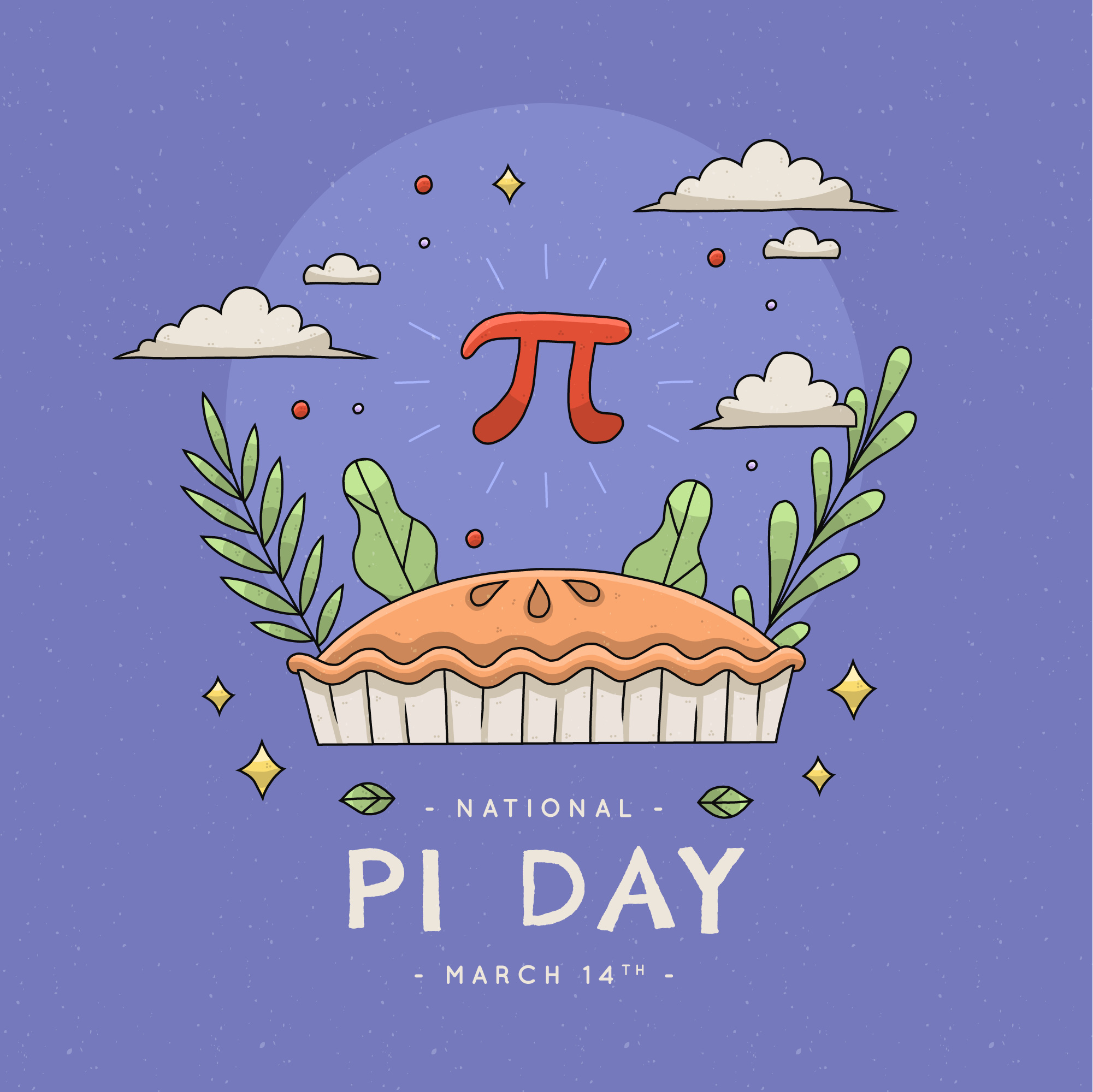Pi (π) is one of the most fascinating and fundamental mathematical constants, representing the ratio of a circle’s circumference to its diameter. With an approximate value of 3.14159, Pi appears in numerous mathematical formulas across geometry, trigonometry, physics, and engineering. What makes Pi truly intriguing is its irrational and transcendental nature—meaning it has an infinite number of decimal places without any repeating pattern.
Throughout history, mathematicians have sought to understand and compute Pi with increasing accuracy. From ancient civilizations like the Babylonians and Egyptians to modern-day supercomputers calculating Pi to trillions of digits, this constant has played a pivotal role in shaping mathematical thought. Pi is crucial in fields such as astronomy, quantum mechanics, and computer science, proving that it is far more than just a number—it is a gateway to understanding the universe.
Why Do We Celebrate Pi Day?
Pi Day is celebrated annually on March 14 (3/14) because the date represents the first three digits of Pi (3.14). The tradition began in 1988, when physicist Larry Shaw organized the first Pi Day celebration at the Exploratorium in San Francisco. Over the years, Pi Day has evolved into a worldwide event, with enthusiasts engaging in fun activities like Pi recitations, math puzzles, and indulging in Pi-themed foods (such as pies).
In 2009, the U.S. House of Representatives officially recognized Pi Day to promote interest in math and science. Schools, universities, and institutions worldwide use this day to inspire students to explore mathematical concepts in creative ways, making learning more engaging and enjoyable.
Who Died on Pi Day?
March 14 holds historical significance beyond Pi Day. Renowned physicist Stephen Hawking passed away on this date in 2018. Hawking, known for his groundbreaking work on black holes and cosmology, coincidentally died on the same day as Albert Einstein’s birth (March 14, 1879). This unique overlap connects two of the greatest minds in history to a day dedicated to mathematical discovery.
Who Discovered Pi?
The concept of Pi dates back thousands of years, with ancient civilizations attempting to approximate its value long before modern mathematics. Some notable early approximations include:
- Ancient Egypt (1650 BCE): The Rhind Mathematical Papyrus suggests an approximation of Pi as 3.1605.
- Ancient Babylon (1900 BCE): Babylonian mathematicians estimated Pi as 3.125.
- Ancient India (circa 600 BCE): Indian mathematicians, including Aryabhata, approximated Pi as 3.1416.
These early estimates, though imprecise, laid the foundation for future explorations into the nature of Pi.

Key Mathematicians Who Contributed to Pi
Archimedes of Syracuse (287 BCE – 212 BCE)
One of the first mathematicians to rigorously study Pi, Archimedes used an innovative polygon-based approach to estimate its value. He calculated Pi to be between 3.1408 and 3.1429, significantly improving previous approximations.
Zhang Heng (78 CE – 139 CE)
The Chinese mathematician Zhang Heng refined Pi’s approximation using a method similar to Archimedes. His calculations yielded a value of 3.1622.
Liu Hui (3rd Century CE)
Liu Hui improved Archimedes’ polygon method and calculated Pi to be approximately 3.1416, very close to its modern value.
Aryabhata (476 CE – 550 CE)
The Indian mathematician Aryabhata provided one of the most accurate ancient approximations of Pi, estimating it as 3.1416.
Leonhard Euler (1707 – 1783)
Euler played a crucial role in establishing the notation of Pi (π) in 1737, making it a universal symbol in mathematics.
Srinivasa Ramanujan (1887 – 1920)
Indian mathematical genius Srinivasa Ramanujan discovered complex Pi formulas that contributed to modern computational methods for calculating Pi with remarkable precision.
Who Named the Term Pi?
The Greek letter π was first used to represent the mathematical constant by Welsh mathematician William Jones in 1706. Before this, mathematicians referred to Pi as simply “the ratio of a circle’s circumference to its diameter.” However, it was Leonhard Euler who popularized the use of π in 1737, making it the standard notation used worldwide today.
Modern Computation of Pi
With technological advancements, mathematicians have computed Pi to trillions of decimal places using supercomputers. Despite this, Pi remains an irrational and transcendental number, meaning its decimal representation never ends or repeats in a predictable pattern.
The most notable advancements in Pi computation include:
- Ludolph van Ceulen (1600s): Computed Pi to 35 decimal places using polygonal methods.
- John Machin (1706): Developed an advanced arctangent formula to compute Pi more efficiently.
- William Shanks (1873): Calculated Pi to 707 decimal places manually (although later found that only 527 were correct).
- D.F. Ferguson (1947): First used a mechanical calculator to compute Pi to 808 decimal places.
- John von Neumann & ENIAC (1949): Used one of the first computers to calculate Pi to 2,037 digits.
- Yasumasa Kanada (1999): Achieved 206 billion digits using the Gauss-Legendre algorithm.
- Emma Haruka Iwao (2019): Set the record at 31.4 trillion digits using Google Cloud computing.
Despite these vast calculations, only a few dozen decimal places are necessary for most practical applications, such as in physics, engineering, and space exploration. The pursuit of additional Pi digits is more of an intellectual challenge than a necessity, showcasing the capabilities of modern computing power.
Conclusion
Pi is more than just a mathematical constant; it symbolizes human curiosity and our endless pursuit of knowledge. From ancient Babylonians to modern supercomputers, the study of Pi continues to captivate minds across generations. Whether in engineering, physics, or even art, Pi remains one of the most intriguing numbers in mathematics.
The celebration of Pi Day on March 14 serves as a reminder of the deep connections between mathematics, science, and history. So, next time you enjoy a slice of pie on Pi Day, remember that you are partaking in a tradition that honors one of the most essential constants in the world of mathematics!



